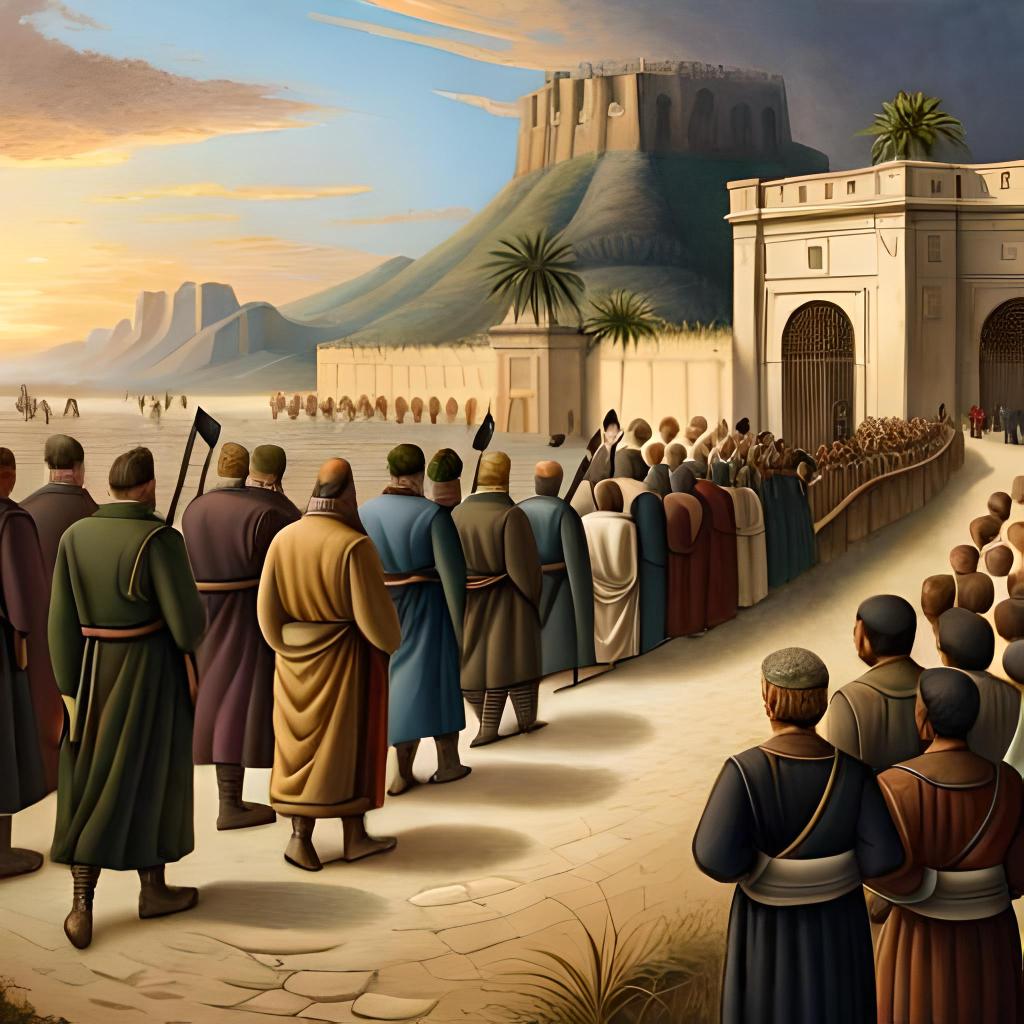Deep within the realms of ancient Jewish folklore lies a tale of intrigue and mystery surrounding the Ten Lost Tribes of Israel and their elusive barrier, the Sambation River. This mythical watercourse has captivated imaginations for centuries, sparking questions about its existence and the fate of the tribes it is said to have protected. In this popular science exploration, we delve into the enigmatic nature of the Sambation River and the enduring mystery of the Ten Lost Tribes.
The legend of the Sambation River is believed to be over 2000 years old, possibly even earlier, and it has undergone numerous revisions since it was first described in the first century CE. This legendary river is mentioned in various cultures and Jewish writings, and it is a fusion of different tales that developed independently.
According to ancient Jewish texts, the Sambation River was no ordinary waterway. It was described as a river that roared with tremendous force, making it seemingly impossible to cross. Legends spoke of the deafening noise caused by the river’s violent currents, which carried heavy stones that obstructed any attempt to traverse its mighty waters.

The river’s very name, Sambation, derived from the Hebrew word “Shabbat” (Sabbath), alluded to a peculiar phenomenon—the river’s stillness and cessation of its raging torrent on the Sabbath day, the single day that Jews cannot pass it.

The Ten Lost Tribes of Israel, exiled by the Assyrians in the eighth century BCE, have become the subject of countless speculations and quests for their whereabouts. Ancient stories place these tribes near the Sambation River, isolated from the rest of the world. But which tribes were those? Were they truly vanish? Were they obliterated or assimilated? Or do their descendants still exist, hidden from modern view?
According to one story, the Levites or Sons of Moses are the ones blocked by the rover, whereas Judah and Benjamin were scattered among the nations. According to this story, God showed the Levites the way to the river for their protection and sealed the path behind them so that no one could find them. When the river was calm, a burning fire shielded the Levites from outsiders. The story of Eldad Hadeni is slightly different; there, a mystic cloud hides the Levites on Saturday. A similar story exists in Islamic sources, which might parallel a story from Jewish sources that did not survive. The problem with these stories is that it is difficult to accept that the Levites were separated from the Judaeans. The Bible states that the Levites mixed with the Judaeans and shared their exile to Babylon; they may not have been exiled with the Ten Israelite Tribes. Although the Levites lived in all the major cities in the Israelite territories, King Jeroboam appointed priests who were not Levites. Consequently, the Levites joined the Judaeans.

By the 6th century CE, Jewish sources all agreed that the ones blocked by the Samation River were the Ten Lost Tribes. The Islamic sources of that time continued to preach about a large group descended from Moses who did not commit the Sin of the Golden Calf, which earned them divine protection. Other versions did not focus on that particular sin but described the group as virtually righteous, allowing the expansion of this group to include the Lost Ten Tribes.

Numerous questions continue to shroud the Ten Lost Tribes and the Sambation River. One key aspect is the location of the river itself. Scholars and explorers have sought to uncover its exact whereabouts, with proposed sites ranging from Iraq to China. However, thus far, no tangible evidence has emerged. The absence of concrete geographical markers has allowed the legend to endure, leaving us to wonder if the river ever existed in physical form or if it is purely a creation of mythical imagination.
Additionally, the fate of the Ten Lost Tribes remains a matter of speculation. Did they stay isolated near the Sambation River, preserving their unique identity and customs? Or did they integrate into neighboring societies, leaving no trace of their distinct heritage? The answers to these questions lie hidden within the annals of history, waiting for discovery.
In recent times, scientific advancements, particularly in genetics and DNA analysis, have sparked hopes of shedding light on the mystery of the Ten Lost Tribes. Genetic studies offer the potential to trace ancestral lineages and detect connections to specific regions or populations. However, these endeavors face substantial challenges due to the complex interplay of historical migrations, genetic mixing, and the passage of time. Despite the allure of using science to unravel the enigma, the journey toward uncovering the truth remains ongoing.

Would you like to learn if you are related to the Israelites and the Ten Lost Tribes? Our DNA Test in Ancient DNA Origins includes DNA tests for All the tribes. These DNA samples were obtained from skeletons found in Israel, before the exile and with the help of AI, reconstructed back to represent the ancient Israelites. With this test, we can trace the whereabouts of the Ten Tribes.
References
אבני, צבי, and Zvi Avni. “Sambation: Recurrence of Tradition / הסמבטיון — גלגול מסורות.” Jewish Studies / מדעי היהדות 37 (1997): 147–59. http://www.jstor.org/stable/23382597. [Hebrew].
Avraham Yari, Igros Eretz Yisroel (Letters of the Land of Israel), in the “Letter of Rabbi Obadiah di Bertinora from Jerusalem to his Brother,” written in 1489, Tel-Aviv 1943, p. 140 [Hebrew].
